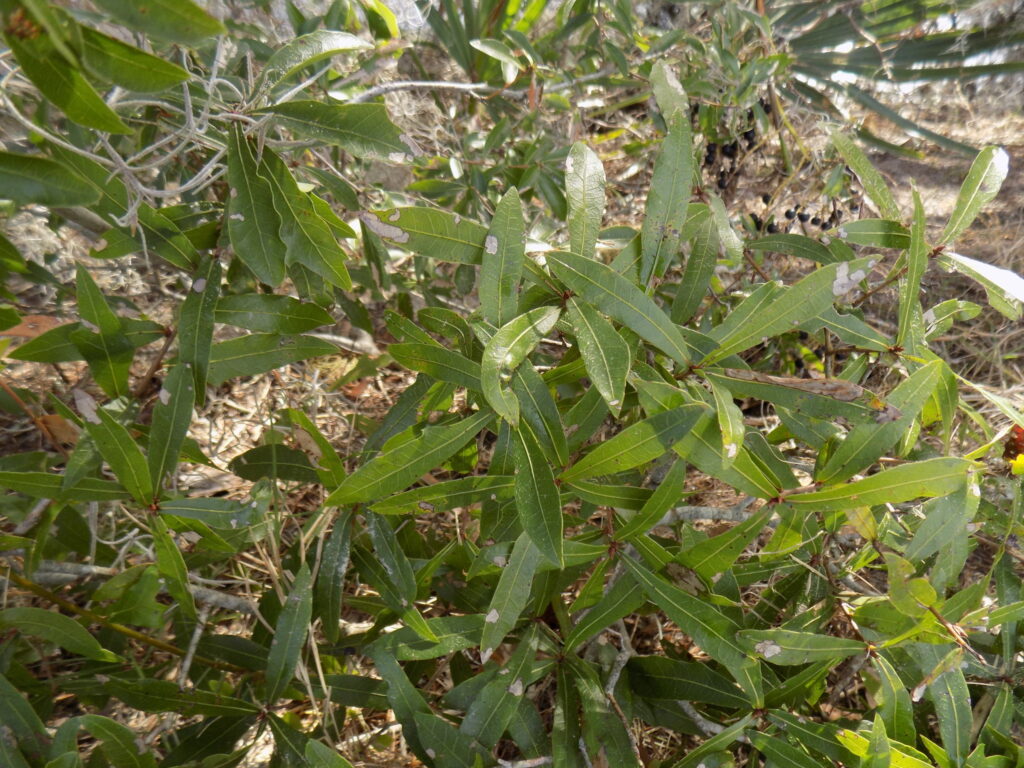


This week for Flora and Fauna Friday we have a much maligned and often misidentified member of the mighty oaks, Darlington Oak (Quercus hemisphaerica).
Darlington Oak, also called Sand Laurel Oak, is a medium-sized oak with a mostly straight growth form, relatively smooth gray bark with shallow vertical fissures, and small, simple, emerald-green evergreen leaves. It loves sandy soils, tolerates drought well, and grows best along our hot, dry uplands. It can grow tall and straight in a forest or broad and round when on its lonesome. Its acorns are small, round, and greenish-brown. Darlington Oak is found in the coastal plain of the Southeast. It is likely our most common member of the red oaks on Edisto Island and the second most common Oak behind the omnipresent Live Oak. However, most people I meet have never heard of it before, yet are nonetheless oh so familiar with it.
Darlington Oak is often confused with, or generically referred to as, Water Oak in our area. Water Oak (Q. nigra) is actually a different but closely related species that prefers moist clay soils and has larger spatula-shaped deciduous leaves. In fact, there are two other oak species, Laurel Oak (Q. laurifolia) and Willow Oak (Q. phellos) that are also closely related and look very similar to Darlington Oak. It doesn’t help either that they can all interbreed and hybridize. But I digress. Darlington Oak and Water Oak are of note because they are derided by property owners across the Island. These two species have a propensity to drop limbs, collapse, uproot, or spontaneously die that is unmatched by our other common tree species. They do make good firewood at least.
Water Oak earned this reputation from its less than rot-resistant heartwood and preference for wet, humid woodlands. Their preference for moist clay soils also means they don’t develop all that deep or robust of a root system. So they topple easily. Darlington Oak, however, lives on our driest, sandiest soils where it grows a deep and expansive root system and rot is not as big of a concern on these well drained soils. This makes Darlington Oak a bit sturdier and longer lived than Water Oak but it is prone to shedding limbs nonetheless. What rots Darlington oak is instead drought. Drought stresses the trees which, if severe, can kill the tree outright but more often makes them more susceptible to disease. Disease creates chronic stress and allows saprophytic soil fungi to invade the trunk. Over the years these fungi will worm their way throughout the tree, weakening it structurally, until one day the whole tree collapses. This fungal invasion is also what causes the tree’s interesting habit of sheering clean off at the soil line with nary a root showing. The heartwood becomes weakest near the soil where the fungal attacks are most concentrated and the physical stress on the trunk is most concentrated at this point as well. So when a hurricane blows through, trees can snap clean off at the bottom. Oaks of all types can also rot from the top down. If rainwater is able to collect in a trunk fork for too long, it will eventually lead to the bark beneath dying and the wood below slowly rotting ever deeper. This can lead to a tree top suddenly splitting apart or shearing clean off as the core of the trunk is hollow.